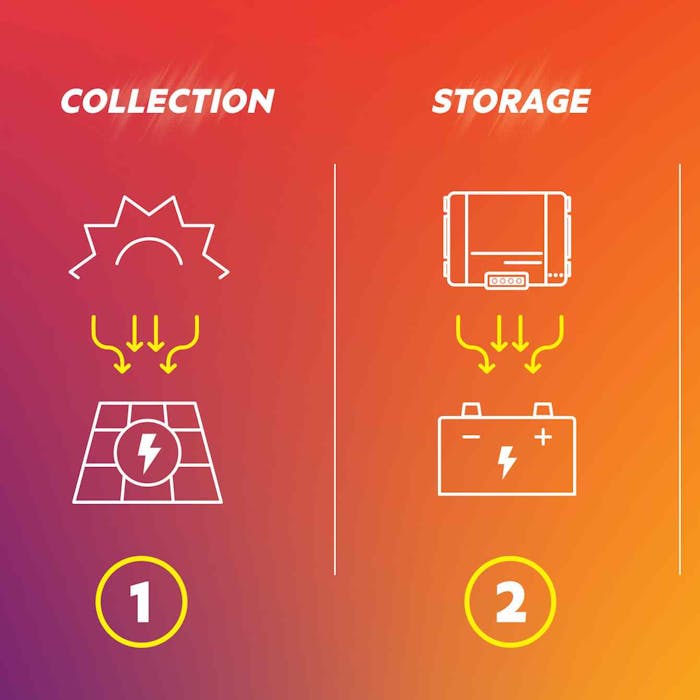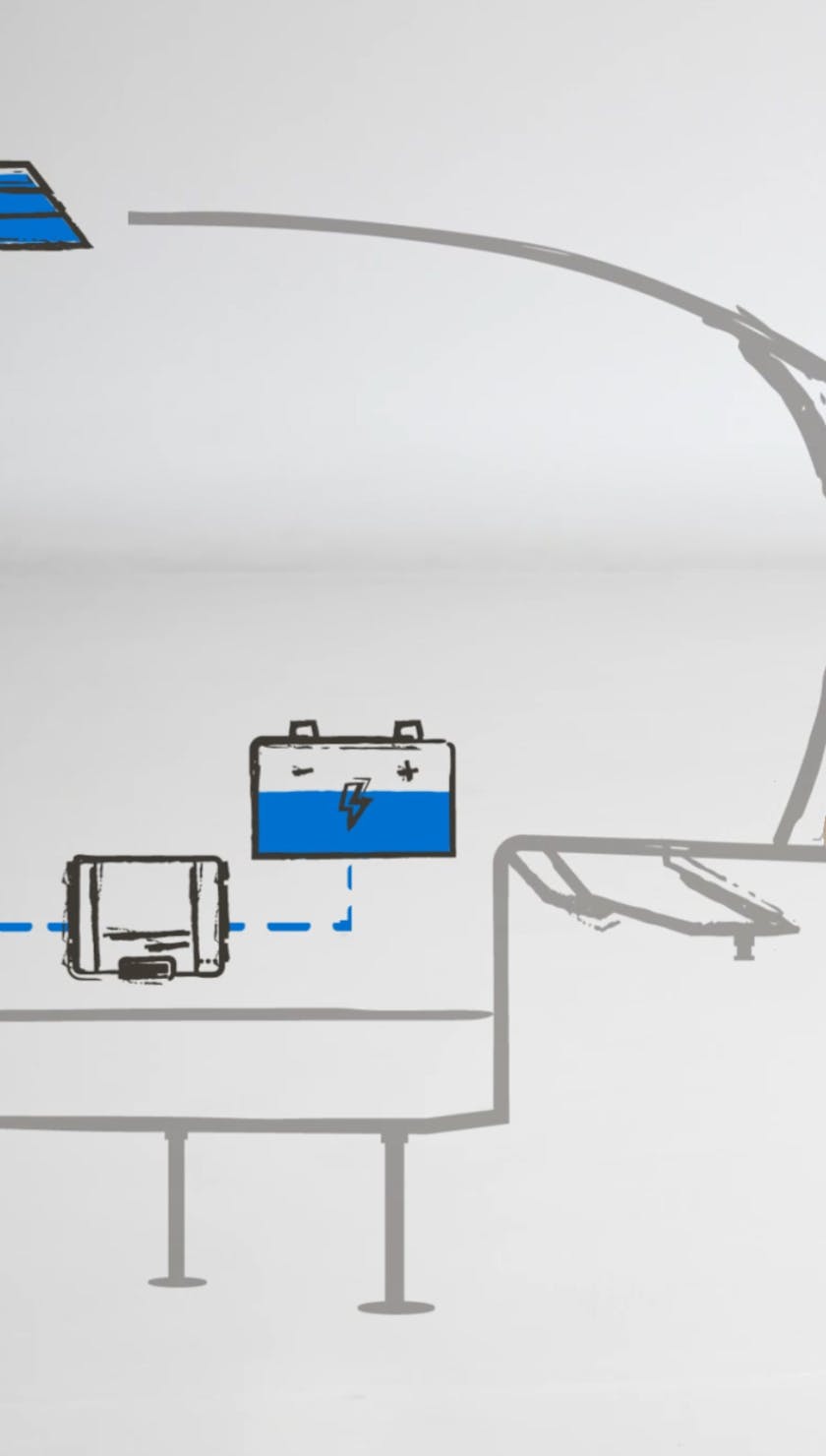RV solar power operates a lot like fueling up and driving your car -- it's all about energy in and energy out.
Think of your RV's battery like the gas tank in your vehicle. In order to keep going, you have to keep gas in the tank. The harder you push on your gas pedal or the longer you drive without filling up, the more fuel you will use.
So, if batteries are the the gas tank, then you can think of solar panels as a gas pump. With solar, the fuel comes from the sun. Energy from the sun is collected by the RV's solar panels, sent through a battery charge controller, and stored in your batteries. Anything in the RV that runs on 12v energy can be run on battery power. This typically includes lights, slides, electric stabilizers and leveling, USB ports, vent fans, water pumps and even 12v refrigerators.
To use solar power for your RV's 110v outlets, you need to have an inverter as a part of your solar power system. An inverter takes the energy from your battery and converts it from DC (direct current) to AC (alternating current), the type of power by most plug-in electronics and appliances. An inverter will send AC power to your inverted outlets so you can plug in and use things like your television, CPAP, coffee pot, and electronics. If you have a powerful enough inverter, AND a big enough battery to store energy, you can even run your air conditioner completely from solar power.
The beauty of solar power is that as long as you have sunlight, you can continue to replenish your "gas tank" (batteries). You just have to make sure that you're not using energy from your batteries faster than the sun can fill them up. More solar panels provide more energy collection (more fuel) and more batteries allow you to store more fuels (a bigger gas tank). Both boondockers and weekend campers should be able to find a solar energy system that both fits your needs and is easily expandable as your needs change over time.


- Solar panels capture the sun's energy.
- Energy is converted to usable power and stored in your RV's battery.
- 12v energy from the battery can be used to power 12v systems and can also be inverted to power 110v outlets if the RV is properly equipped.

